When a pandemic strikes, the world’s leading experts convene – physically or virtually – in a hi-tech chamber in the basement of the Geneva headquarters of the World Health Organization.
It is called the “strategic health operations centre”, or SHOC, an appropriately urgent acronym for a place where life and death decisions are taken, and it is where critical choices were made in the early days of the coronavirus outbreak.
“We’re mostly like a 1950s, never-been-upgraded place, except for the SHOC room, which was built with all the screens everywhere and the desks with computers that rise up. The whole thing does look like something that Hollywood set up, imagining a pandemic,” a WHO official said.
“You sit there and you hear these experts from all over the world and they’re really leading people. The best expertise available to get the best advice possible, it’s a very impressive sense that hey, this is really how it is supposed to work.”
On 22 January, it was in this setting that the WHO emergency committee convened to make a pivotal decision on whether to advise the organisation to declare a “public health emergency of international concern” (PHEIC) – a formal red alert for the world.
The WHO had been sharing information with member states constantly since the first cluster of pneumonia cases was first identified in the Chinese city of Wuhan at the end of December, but declaring a PHEIC still had huge symbolic importance.
The WHO director general, Tedros Adhanom Ghebreyesus, sat in the SHOC with his top advisers watching as a succession of speakers gave their views on the screens in front of them.
First there were reports from China, and then Japan and Thailand where cases had been recently confirmed. Then it was the turn of the 15 members and six advisers on the emergency committee, drawn from around the world.
The debate was highly technical but it had one critical issue at its heart. It was known by then that the virus had spread from person to person, but the question was how easily?
If human-to-human transmission was only happening in close quarters, in families, or between patients and health workers, then perhaps it could be largely contained without a worldwide alert, and all the global economic disruption that entailed. If the virus was spreading freely among communities, there was not a moment to lose.
The emergency committee was split down the middle on the question. So Tedros told it to convene again the next day, in the hope new data might create a consensus.
“Tedros’s only obligation under the law is to convene a committee but not to follow it. But he feels that politically he needs to get a unanimous decision before he acts or at least an overwhelming majority,” Lawrence Gostin, a professor of public health law at Georgetown University, said.
The second day’s meeting however, changed no one’s mind, and the impasse remained. Tedros had the committee adjourn pending further study and put it on notice to reconvene at short notice. A international health emergency was declared a week later, on 30 January, after clear evidence of community spread of Covid-19 had emerged.
The events of January were always destined for scrutiny. The WHO conducts an after-action report in wake of every pandemic. But by seeking to make the global body the scapegoat for the debacle of the US response, Donald Trump has ensured each detail will become exhibits in a highly-politicised show-trial, likely to last as long as the election campaign.
Furthermore, the president has used claims of WHO’s dysfunction to justify cutting off US funding to it, worth over $400m a year, and hindering the organisation’s ability to help counter the spread of the pandemic in fragile and poor countries around the world.
In a hail of accusations hurled at the WHO in recent days, Trump has accused it of withholding critical information about the danger of Covid-19, and being under the control of China.
China argued against declaring an emergency on 22 January, but could not have carried the argument alone. The other emergency members and advisers came were experts from the US, Thailand, Russia, France, South Korea, Canada, Japan, Netherlands, Australia, Senegal, Singapore, Saudi Arabia, Sweden, and New Zealand.
Their advice is confidential, but for the vote to have been split, several western, or western-aligned, representatives must have voted with Beijing.
While the emergency committee took a week to decide to declare a PHEIC, Trump spent more than a month after that playing down the threat to the US, during which the country fell weeks behind the rest of the world in diagnostic testing and stockpiling essential equipment.
There is no evidence to support Trump’s claim that the WHO hid information at China’s behest. The US is well represented in the top ranks of the organisation. There were more than a dozen officials from the US Center for Disease Control and Prevention (CDC) embedded in the WHO in January and February.
US health leaders were part of regular conference calls, weekly or twice weekly, beginning on 7 January. From 10 January those calls included warnings about the risk of human-to-human transmission.
“Why did the WHO Ignore an email from Taiwanese health officials in late December alerting them to the possibility that coronvirus could be transmitted between humans?” the president asked in a tweet on Friday, echoing a claim made by Taipei.
However, the Taiwanese email appears to have made no such warning. It was sent from Taiwan’s CDC to its WHO liaison officer on 31 December, hours after the first official report of a cluster of pneumonia cases in Wuhan were published online.
According to the text provided to the Guardian, the email said: “News resources today indicate that at least seven, atypical pneumonia cases were reported in China.”
It restates the details of Chinese report, adding “I would greatly appreciate it if you have relevant information to share with us.”
The email did not contain new information, and certainly nothing about human-to-human transmission. The WHO had picked up the same report on the night of 30 December and was urgently seeking more information. On 1 January it activated its incident management support team, putting the organisation on an emergency footing.
The Taiwanese government has claimed that it did not receive a reply to its inquiry and was generally shut out from WHO deliberations. Since the UN voted to recognise the People’s Republic as the sole representative of China in 1971 and the World Health Assembly followed suit in 1972, Taiwan has not had full member status in the WHO, but it is involved in the organisation’s work.
It is one of 15 non-state entities that have access to expert deliberations through an information network established by the International Health Regulations (IHR), a pact on collective action against infectious disease with roots stretching back to the nineteenth century. The latest version was agreed in 2005 by 196 countries, and it provides the legal framework for the work of the WHO.
However, Taiwan says its participation is fragmentary and selective, largely because Chinese obstruction. A Taipei government statement pointed out that it reported its first confirmed coronavirus case on 21 January through the IHR system, but was not invited to participate in the three emergency committee meetings held in January, where its voice may have made a difference.
Taiwanese experts were among the first to visit Wuhan, in the first half of January, and its containment measures later proved effective. Singapore, meanwhile, had two representatives on the committee.
“The Covid-19 outbreak is a reminder to all the world once again, that politics has barred Taiwan from contact and communication with WHO and global public health experts, and this can only gravely damage global cooperation in epidemic prevention and control,” the statement said.
Tedros has also drawn criticism for his tireless praise of China and Xi Jinping’s leadership, hailing Beijing’s transparency despite the critical early weeks left when the authorities tried to cover up the extent of the problem in Wuhan. The director general’s defenders say such diplomatic flattery is the price of ensuring Chinese cooperation with information and WHO site visits. Tedros also complimented Trump in a March 23 tweet, claiming he was doing “a great job in the fight against Covid-19”, and Trump was also effusive in praising Xi in the first weeks of the pandemic.
“They’re making it seem like he’s a crony of China, but he’s caught in the middle of a super power struggle competition,” Gostin said.
The WHO also provided ammunition to its detractors when, on 14 January, it put out a tweet citing preliminary Chinese studies finding “no clear evidence of human-to-human transmission”.
It was issued on the same day the WHO’s technical lead on Covid-19, Maria Van Kerkhove (a US immunologist) gave a press briefing in Geneva warning of precisely the opposite – the potential for rapid spread. Concerned that her briefing conflicted with the initial Chinese findings, a middle-ranking official told the social media team to put out a tweet to balance the Van Kerkhove briefing. In so doing, the WHO exposed itself to the charge of contributing to an air of complacency. But the tweet was factually true and does not appear to have been part of a deliberate strategy.
Again and again, the events of January reflected the difficulties Tedros and his organisation faced in negotiating a path between two hostile superpowers, and the egos of their leaders, without any independent powers to enforce compliance and information sharing.
However, what mistakes that may have been made in charting that course have little to do with the lethal fiasco that unfolded in the US in the two months after the WHO raised an international alarm.




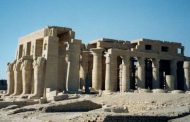



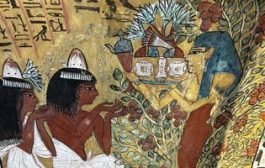


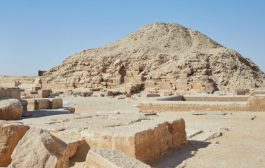













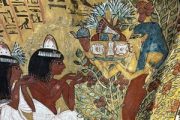


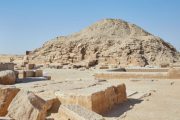
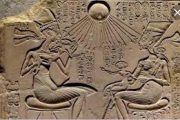



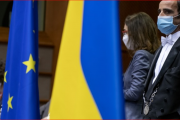

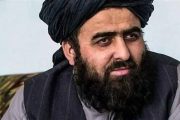

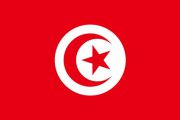


admin in: How the Muslim Brotherhood betrayed Saudi Arabia?
Great article with insight ...
https://www.viagrapascherfr.com/achat-sildenafil-pfizer-tarif/ in: Cross-region cooperation between anti-terrorism agencies needed
Hello there, just became aware of your blog through Google, and found ...